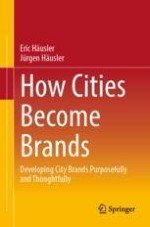2024 | OriginalPaper | Chapter
3. The Assertion: City Brands are Created
Authors : Eric Häusler, Jürgen Häusler
Published in: How Cities Become Brands
Publisher: Springer Fachmedien Wiesbaden
Activate our intelligent search to find suitable subject content or patents.
Select sections of text to find matching patents with Artificial Intelligence. powered by
Select sections of text to find additional relevant content using AI-assisted search. powered by
